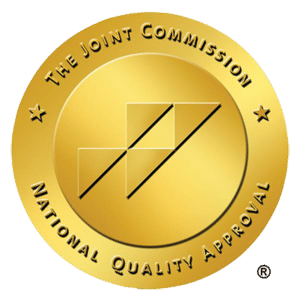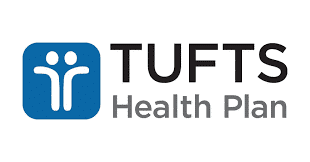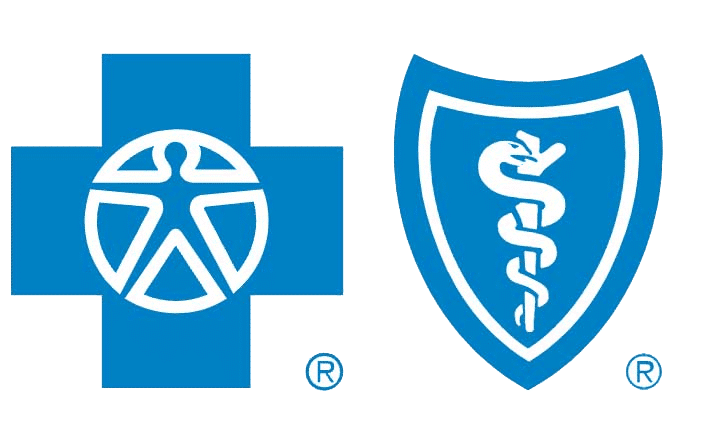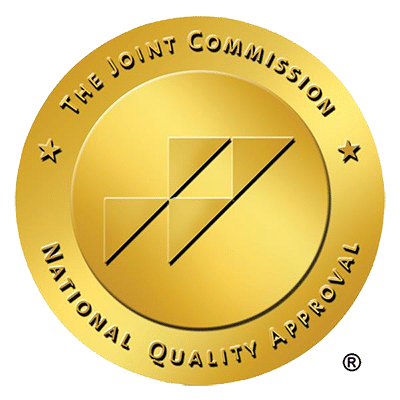Knowing the signs of marijuana addiction is vital for recognizing a serious problem that often goes unnoticed. In this article, we address the real indicators – from behavioral shifts to withdrawal pains – that signal a dependency on marijuana. As you read on, you’ll learn not just to spot these signs, but also to understand their implications and the next steps if addiction is a concern for you or someone close to you.
Key Takeaways
- Marijuana addiction, or marijuana use disorder, affects approximately nine percent of users and can lead to relationship issues, career impairment, and a diminished quality of life, highlighting the need for awareness and early intervention.
- Chronic marijuana use may contribute to cognitive dysfunction, behavioral changes, and an array of psychological impacts, including the potential for temporary psychotic episodes and exacerbating symptoms in those predisposed to or living with psychotic disorders.
- Preventing and treating marijuana addiction, especially in young adults and teens, is critical and can involve behavioral therapy, support groups, and in severe cases, professional intervention through services like the Substance Abuse and Mental Health Services Administration (SAMHSA) and specialized treatment facilities.
Understanding Marijuana Addiction
Marijuana addiction, often referred to as marijuana use disorder, is a chronic condition where an individual struggles to control their marijuana use despite experiencing adverse effects. Approximately nine percent of marijuana users develop an addiction to the substance, indicating the severity and broad reach of this issue related to mental disorders.
The inability to stop using marijuana despite negative consequences is a significant indication of marijuana addiction. It can affect various aspects of an individual’s life, including personal relationships, career progression, and overall quality of life. The infamous ‘high’ from marijuana might seem harmless initially, but it’s the potential harm that could follow that one needs to be aware of.
Identifying Key Indicators of Marijuana Dependence
The initial step towards seeking help involves identifying the primary signs of marijuana dependence. Users may require higher concentrations or more marijuana over time to achieve the same high, indicating an increase in tolerance, a key sign of dependency. Common symptoms of cannabis withdrawal include:
- Irritability
- Insomnia
- Appetite disturbance
- Physical discomfort
These symptoms signal the body’s reliance on marijuana smoking, as the effects of medical marijuana smoke take hold.
Moreover, attempts to cut down or control marijuana use often result in failure, characterized by consumption in greater amounts than intended and persistent cravings.
Behavioral Changes and Relationship Problems
Significant social and relationship issues may stem from marijuana addiction. It can disrupt normal social functioning, causing strain in personal relationships and impacting interactions in social settings. Individuals who persist in using marijuana despite encountering social and relationship issues may be demonstrating a sign of marijuana use disorder.
In addition, marijuana misuse can result in decreased life satisfaction, deteriorated mental and physical health, and hindered academic or career success. This impact on an individual’s overall daily living is a serious consequence of continued marijuana use. The pleasure from the high comes at a cost, and this cost can be detrimental to one’s overall well-being.
Physical Signs and Health Complications
Various complications can arise due to the disruption of the cerebrovascular system by cannabis consumption. Cannabis inhalation has been linked to ischemic and hemorrhagic cerebrovascular diseases, indicating its role in the etiology of cerebral stroke. Moreover, cannabinoids may cause reversible intracranial vasoconstriction and reduced cerebral blood flow, which can lead to neuronal death due to ischemia.
Potential mechanisms for stroke in cannabis users include cerebral artery stenosis, blood pressure fluctuations, and reversible cerebral vasoconstriction syndrome.
Besides, teens using marijuana might exhibit physical signs such as red or bloodshot eyes and delayed reaction times. These physical signs and health complications underline the importance of early detection and intervention.
Want to Learn More about Marijuana Addiction?
Our addiction recovery team is here 24/7 to answer your questions or to get you help.
The Psychological Impact of Chronic Marijuana Use
Cognitive dysfunction, behavioral issues, memory and attention deficits, along with both structural and functional changes in the brain can result from chronic marijuana use. Some of the specific effects of marijuana use on the brain include:
- Attention, memory, and learning problems
- Structural and functional changes in the brain
- THC, the primary psychoactive component in cannabis, binds to cannabinoid receptors in the brain, affecting memory, motivation, and personal experience.
High doses of cannabis can trigger temporary psychotic episodes in some individuals, potentially increasing the risk of developing psychotic disorders later. Cannabis use has been linked to an earlier onset of psychosis in individuals with a genetic predisposition to psychotic disorders. Exacerbation of symptoms in individuals with existing psychotic conditions, such as schizophrenia, may occur as a consequence of cannabis use.
Furthermore, marijuana use is linked to same-day increases in hostile behaviors and the perception of hostility in others. Evidence suggests a connection between cannabis use and mental health issues like depression and suicidal thoughts, particularly in adolescents and military veterans. The relationship between cannabis use and mental health disorders is complex and is influenced by many factors including genetics, trauma, stress, and frequency of use.
Long-term complications from continuous or heavy cannabis use may be irreversible, emphasizing the seriousness of its impact on mental health.
Recognizing Cannabis Use Disorder in Young Adults and Teens
About 30% of marijuana users may develop a marijuana use disorder, and youth who start using marijuana early and consume it more frequently are at a higher risk. Preventing the progression of marijuana use disorder in adolescents and young adults necessitates early detection and intervention. Parents should monitor for signs of cannabis use disorder, such as the presence of marijuana-related accessories, difficulties in school performance, and changes in behavior that may signal progressing addiction.
Furthermore, marijuana use during adolescence poses concerns for brain development. Teenagers and young adults are the most common users of marijuana, and they face potential long-term negative consequences. Recognizing the signs early and seeking professional help can prevent these consequences and enable a healthier transition into adulthood.
The Cycle of Marijuana Abuse and Withdrawal
Grasping the cycle of marijuana abuse and withdrawal is vital for embarking on the path to recovery. Symptoms of marijuana withdrawal include:
- irritability
- sleeplessness
- decreased appetite
- anxiety
- drug craving
Physical or psychological problems from marijuana use and consequent withdrawal symptoms signal the development of dependence on the drug, which can lead to drug abuse.
The transition from recreational use to addiction can be marked by:
- Increased frequency of use
- Emerging dependence
- Experiencing cravings
- Withdrawal symptoms
All of these can lead to negative health impacts and adverse effects on everyday life. An inability to resist the urge to use marijuana despite a strong desire to quit is a clear sign of a serious addiction taking hold.
When marijuana use begins to dominate an individual’s daily life or threatens their health, it indicates a serious addiction that requires immediate recovery efforts. Development of tolerance to cannabis can be observed by a discrepancy between the amount of cannabis a person reports using and their blood levels.
To combat marked intoxication or withdrawal, stopping cannabis use entirely is the goal, achieved best with a gradual reduction to ease the discomfort of withdrawal and minimize the risk of relapse.

When Casual Use Becomes a Substance Abuse Problem
Between 2008 and 2017, the average THC concentration in the cannabis sativa plant has nearly doubled from 9% to 17%, and dispensary products can contain up to 45% THC. Increased THC concentrations in marijuana are posited to influence the development of marijuana use disorder, shifting the use of cannabis towards substance abuse.
Regular cannabis use is when cannabinoids are consumed 10 to 19 times monthly, while heavy use is categorized by usage of 20 times or more within a month. The full impact of high THC concentrations on the risk of developing a marijuana use disorder is not yet fully understood, contributing to uncertainties in identifying the transition from casual to problematic use.
Navigating High Risk Situations and Triggers
Mental relapse involves an internal conflict about using marijuana, where there’s an internal struggle between the desire to use and the effort to resist. Physical relapse is when an individual succumbs to using marijuana again, often triggered by situations where they believe they won’t be caught.
For sustained recovery, it’s vital to identify and manage situations and triggers that heighten the risk of relapse. The five rules of recovery, which include:
- Changing your life
- Being honest
- Asking for help
- Practicing self-care
- Not bending the rules
These are key strategies to navigate risky situations and prevent relapse.
Seeking Help: The Role of Mental Health Services Administration
Operating under the U.S. Department of Health and Human Services, the Substance Abuse and Mental Health Services Administration (SAMHSA) strives to improve the nation’s behavioral health. SAMHSA was established with the goal of:
- Making substance use and mental disorder information more accessible
- Providing services to those in need
- Conducting research to advance the field of behavioral health
SAMHSA’s strategic plan emphasizes:
- Mental health promotion
- Prevention
- Treatment
- Focusing on equity
- Trauma-informed care
- Recovery
- Evidence-based foundations
SAMHSA’s National Helpline provides a confidential, free information service including referrals to treatment facilities and support groups for individuals and families dealing with substance use disorders.
Professional intervention may be necessary in severe addiction cases due to the potential danger of withdrawal symptoms and the complexities of addiction that go beyond willpower. In therapy, particularly during the emotional relapse stages, goals are set to:
- Identify and amend patterns of poor self-care and denial
- Utilize cognitive therapy to alter negative thought processes
- Develop healthy coping mechanisms for preventing relapse
SAMHSA uses advisory councils comprising public members and mental health professionals to receive guidance on advancing its substance abuse and mental health goals. The organization’s budget is directed towards programs designed to reduce the impact of substance abuse and mental illness on communities across America.
Topsail’s Comprehensive Approach to Treating Marijuana Addiction
Focusing on individuals battling marijuana addiction among other substances, Topsail operates as a rehab and treatment facility. Topsail offers a range of marijuana addiction treatment programs in ma tailored to individual needs, including outpatient therapy, partial hospitalization, and intensive outpatient care, alongside customized treatment plans and medication-assisted treatment options.
Located in North Andover, Massachusetts, Topsail provides a serene and safe environment with top-notch amenities designed to support the recovery process. Most major insurance plans are accepted at Topsail, with many insurance companies in Massachusetts covering some or all costs of addiction treatment.
The Journey to Recovery: What to Expect from Treatment
Often following the Transtheoretical Model of Change, the recovery process from marijuana addiction includes stages like:
- Pre-contemplation
- Contemplation
- Preparation
- Action
- Maintenance
After completing a treatment program, sustained support through aftercare is critical in reinforcing successful recovery and preventing relapse.
Treatment for marijuana addiction may encompass detoxification, individual behavioral therapy, group therapy sessions, and building skills essential for managing addiction. The goals of treating cannabis use disorder include enhancing overall function, treating co-occurring disorders, making behavioral changes, developing better coping strategies, and fostering self-awareness.
In conclusion, marijuana addiction is a prevalent issue that can have severe impacts on an individual’s life. Recognizing the early signs of addiction, understanding the detrimental effects on mental and physical health, and seeking professional help are crucial steps towards recovery. The journey to recovery may be challenging, but with the right support and resources, it is entirely achievable. Let’s remember, no one is alone in this journey, and help is always available.
Frequently Asked Questions
What are the signs of marijuana addiction?
If you or someone you know shows increased tolerance to marijuana, withdrawal symptoms, failed attempts to control use, and continued use despite negative consequences, these may be signs of marijuana addiction. It’s important to seek support and professional help to address the issue.
What are the physical and psychological impacts of chronic marijuana use?
Chronic marijuana use can result in cognitive dysfunction, memory and attention deficits, and an increased risk of developing psychotic disorders. It can also lead to disruptions in the cerebrovascular system, potentially causing complications like stroke.
What is the role of SAMHSA in helping with marijuana addiction?
SAMHSA plays a crucial role in providing accessible information, services, and research on marijuana addiction, including a National Helpline for treatment facility referrals and support groups. Their assistance is valuable in addressing marijuana addiction issues.
How does Topsail treat marijuana addiction?
Topsail treats marijuana addiction with personalized addiction treatment programs such as outpatient therapy, partial hospitalization, and intensive outpatient care, offering a serene and safe environment for the recovery process.
What does the journey to recovery look like?
The journey to recovery involves stages such as pre-contemplation, contemplation, preparation, action, and maintenance. It may include detoxification, behavioral therapy, skill-building, and aftercare support to enhance overall function, treat co-occurring disorders, and prevent relapse.
Related Posts

The Stages of Crack Addiction: Understanding the Progression
Are you trying to understand the stages of crack addiction? This article outlines the progression from initial experimentation to the devastating impact of full-blown addiction.

The Signs of Crack Addiction: Key Symptoms to Watch For
Spotting the signs of crack addiction early can be lifesaving. Rapid weight loss, behavioral shifts, and psychological disturbances are warning signals. This guide directly addresses

Managing Crack Addiction Withdrawal: Symptoms & Timelines
What does crack addiction withdrawal really look like and how can you manage it? When confronting withdrawal, it’s crucial to grasp the intensity of symptoms,

How to Treat Marijuana Addiction Effectively: Beat The Habit
Seeking how to treat marijuana addiction? This straightforward guide outlines step-by-step methods to break free from marijuana’s grip. Simplifying the science, we address the core

A Step-by-Step Guide on How to Overcome Crack Addiction
Navigating the turbulent waters of crack addiction recovery may seem daunting, but you’re not alone. In learning how to overcome crack addiction, knowing what to

Critical Signs of Meth Addiction: Symptoms & Support Options
Wondering what are the warning signs of meth addiction? Early detection can be lifesaving. From drastic behavioral swings to ‘meth mouth,’ these symptoms are alarming















